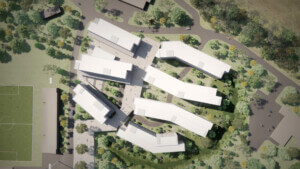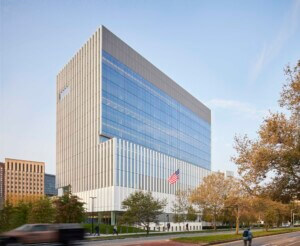I moved to New York very gradually, first by having an internship the summer of my junior year during which I sublet a place on the Upper West Side from a friend, then by going back to college, then by taking a train to Grand Central and crashing at a friend’s place in what was then far-out Prospect Heights the summer after graduating, then really “moving here” by subletting a friend’s wife’s brother’s apartment in Murray Hill for six months, then moving with three guys—one of them my college boyfriend—into an Upper East Side railroad three-bedroom, then by living in the East Village, then taking the subway and eternal walks to a house in Red Hook, then living in a place in Park Slope with another boyfriend, then a place in Park Slope without that boyfriend, then leaving for the West Coast for nine spinningly short years, then coming back two years ago by car and staying in Crown Heights, then Kensington, then another place in Crown Heights, then thinking for a year about going back to Oakland, then sliding into staying, then—over the past year—splitting my time between a friend’s apartment in Prospect Heights and my boyfriend’s place a few blocks up. But this week, almost two decades since my first attempt, I really moved here: I just bought a place in Bed-Stuy.
This—yes, all this—is about Moynihan Train Hall. It is because until going to Moynihan Train Hall—first with my friend and colleague the architecture writer Ian Volner, and then by myself, in two trips interrupted by a detour to Hudson Yards to get a sandwich—I didn’t really ever feel like I’d arrived in New York. Not arrived arrived, the way I see girls in movies arriving, getting off of buses and trains from Ohio or Nebraska or wherever, fresh-faced and full of possibility. It’s a cliché because it’s real, which is how clichés always start; the point, anyway, is that there was a point at which I did arrive in New York but didn’t have that moment. That grand awakening in one of those movies that would have me come up the escalators, see that arching glass roof, and spin my arms around. Because that’s actually what I wanted to do the first time I saw Moynihan.
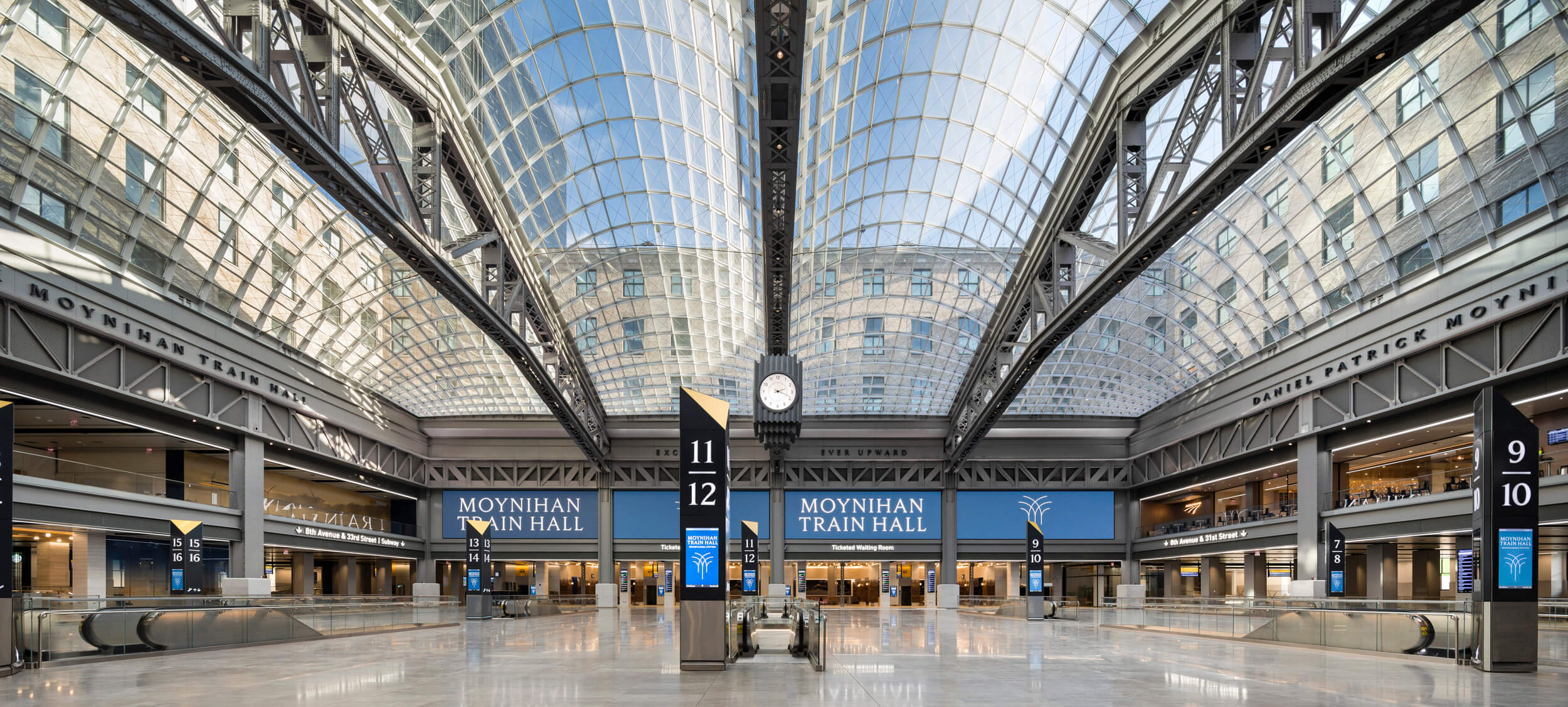
There is perhaps no New York civic project currently more discussed than Moynihan, which is supplanting its neighbor Hudson Yards as the large urban topic of the day. And why not! It’s got it all: a $1.6 billion price tag, original steel trusses, a massive skylight, tons of escalators, a lot of redone columns, and soon a Magnolia Bakery—all of it part of an adaptive reuse of the 1912 Beaux-Arts–style McKim, Mead & White–designed James A. Farley Post Office in a design led by Skidmore, Owings & Merrill (SOM) with ticketed waiting room interiors by Rockwell Group. It’s exciting because it’s been underway for 30-something years, something acknowledged in one of the wall texts that greets you at the north entryway and reads, in a zanily looping font, “It Always SEEMS Impossible UNTIL IT’S DONE.” It’s exciting because Penn Station, the other, more proximate neighbor that Moynihan is adding to/replacing, fucking sucks. And it’s exciting because the Daniel Patrick Moynihan Train Hall really feels like a new typology for the city—a sort of private but mostly public space, for anyone and everyone, with a specific purpose (transportation) but producing unspecific results (grandeur, awe, collective social experiences, office lunches).
It’s not Grand Central, which feels like it’s explicitly about trains—what with the tracks directly off the central hall, the ancient ticket counters lining a wall, the soaring ceiling looked at only once in a blue moon—and where I’ve spent a lot of time getting ready to take the Hudson to go visit my parents in Rhinebeck. And it’s definitely not Penn, which I spent a lot of time in that internship summer when I was going back and forth from New York to Pennsylvania to see that college boyfriend, taking the New Jersey Corridor to Trenton, switching to the SEPTA to Philadelphia, and then taking another SEPTA to Radnor. I was a true commuter, on my way to and from someone else’s bedroom community, sometimes, on rare occasions, letting myself take the Amtrak straight to Philly. Penn Station was biscuits from Roy Rogers and an ice cream cone from Carvel. I drafted my first-ever magazine piece in the Amtrak waiting room in the year 2003, which is the year I showed up in—though still never arrived at—New York.
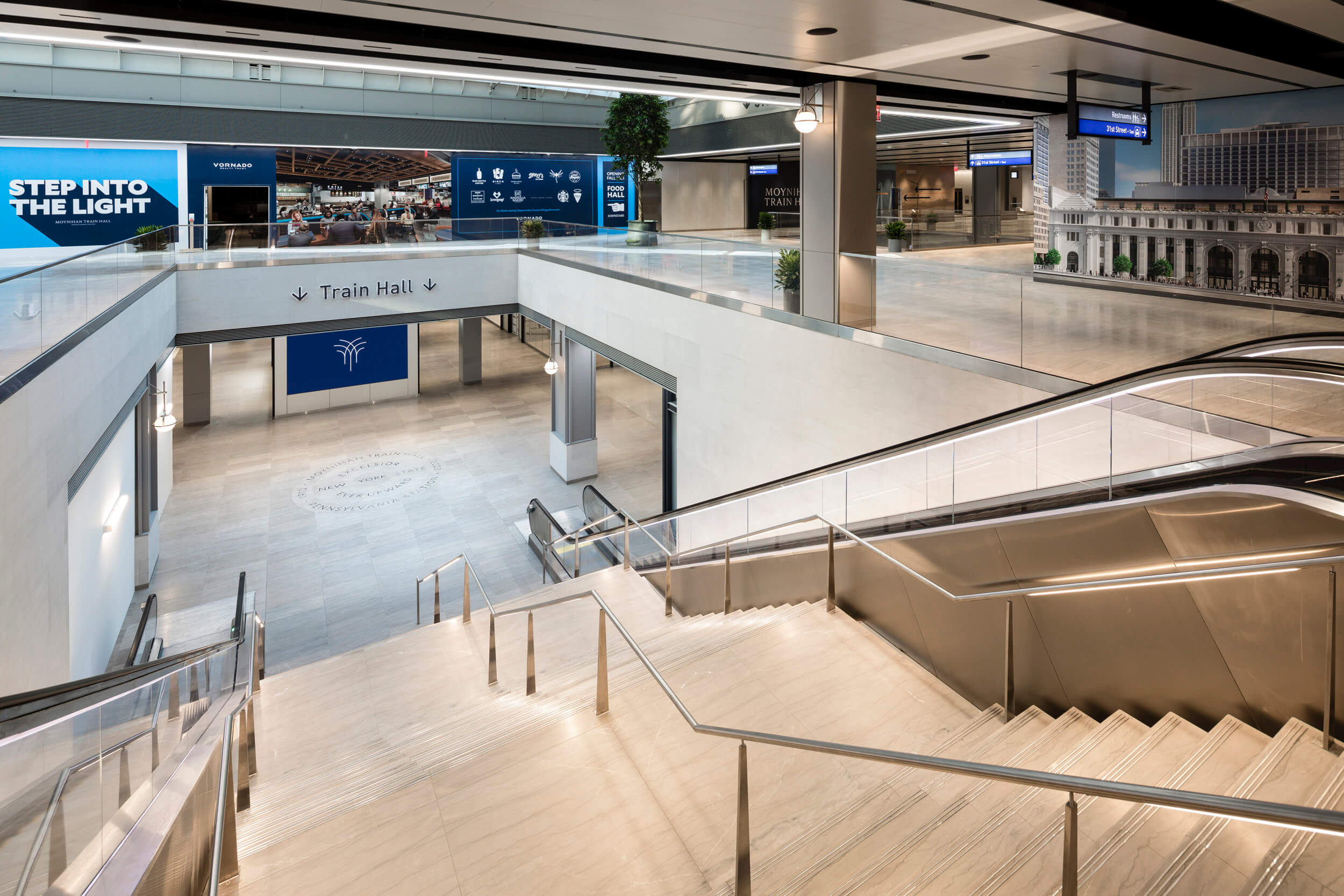
In case you couldn’t tell, I think a lot about trains and transportation and entrances into and exits out of the city, and that’s sort of what Moynihan is about. Before my second trip, I asked architects Roger Duffy and Colin Koop, both of SOM, how I should visit the station, because the first time, with Ian, we came in through the north side, between 8th and 9th Avenues, and found ourselves on the still-empty second floor; instead of that breathtaking arrival we got a preview of what’s billed as “The Penn District, a Vornado campus,” and looks like it’ll be a half-Portland, half-Austin–type food hall, which, don’t get me wrong, I’m very pumped about. Because I would be coming from Brooklyn, Duffy and Koop said I should come in through 8th Avenue, or how a New Yorker would leave as opposed to how an out-of-towner would arrive. I took the G to the E and got out at 34th Street, walked over to 8th Avenue, and went in through the doors marked Trains. I saw people standing in line for the Starbucks. I felt the proximity of the skylight. I was excited. I felt like something cool was happening, or about to happen, or had just happened.
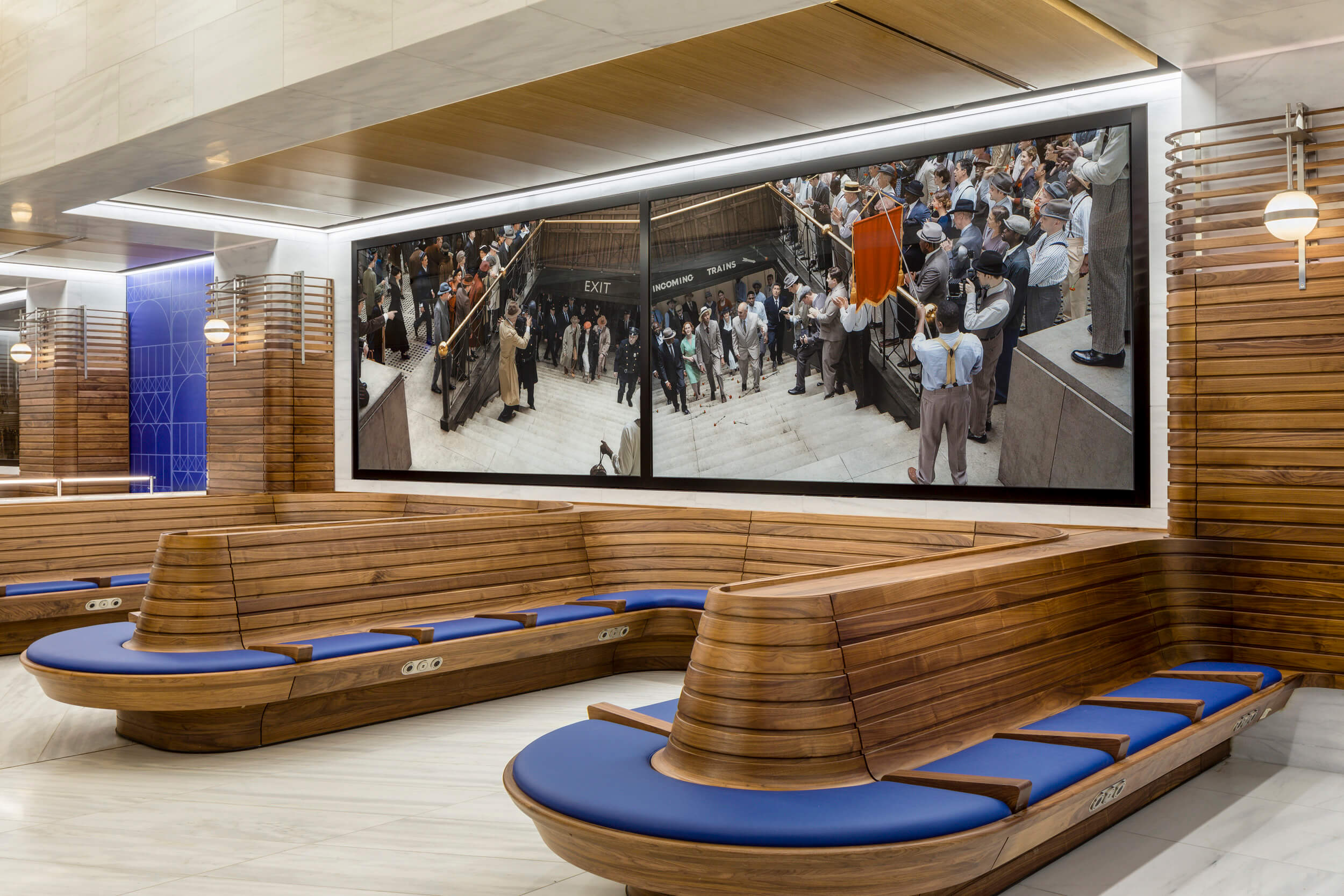
I noticed a few things. I noticed a video screen that showed the project under construction, a sort of leaning into, maybe, of how long everything had taken. There are a few of those around the train hall and they offer a fascinating contrast to the clarity of the architecture itself, which seems, on its face, simple. (That is how, of course, you know it’s hard.) I haven’t seen a plan, but it seems like there’s a big central space that’s articulated by columns and trusses and that massive glass roof and then a lot of broad hallways. Duffy had told me that the columns are in part from the original McKim, Mead & White building, and there’s a first and second floor, and eventually, there will be that food hall. I noticed the slick metal materiality of some of the walls and the matte stone of some of the others. I noticed the shininess of the floor. I kept walking into the central hall, where I noticed the art deco-ish clock, which I later found out was designed by architect Peter Pennoyer and the result of a competition, which is fun.
I noticed how the glass ceiling seems to undulate and is made of lots of little rectangular panels, through which you can see the surrounding and very well-articulated brick structure. I noticed big blue signs saying things like “Dear New York. This Is for You,” and I noticed how few people were there and it made me think how many people there will one day be. I noticed that the only food option seemed to be a Starbucks, until I noticed a Blue Bottle kiosk, which I, a former Oaklander, almost ran toward. While ordering a New Orleans, I asked the barista what he thought of the space. He said it was nice, but it was kind of a bummer that there was this big column in front of him. We both looked up at the sky together. I noticed the Amtrak ticketed waiting room and was allowed in to take a closer look. I noticed that there was a plethora of electrical outlets, and wavily articulated wooden benches, courtesy of Rockwell Group. I noticed the massive Paul Loebach for Roll & Hill rectangular Halo pendants (full disclosure: he’s the person I bought my place with), and I noticed, most of all, how nice everything felt.
“There aren’t that many ‘interiorly’ civic spaces in New York City,” Duffy said on the phone, after walking me through where to walk in. He listed maybe ten such spaces, including Grand Central and the Oculus downtown. I observed that it seems very cool lately to like infrastructure, that all of the next generation of architecture critics, theorists, and practitioners whom I follow on Twitter have this ability to understand the role of the civic in the built environment far better than my late-’90s/early-aughts–trained sensibilities ever will. Koop agreed that it’s a trend. “If you’re concerned with climate change and a more equitable experience for all citizens”—that is, two of the most pressing issues of our time—“those are the places where the impact is being made.”
I asked them about creating a space that’s an interior civic space, a destination in its own right, and that’s at the same time fundamentally about entering and exiting, leaving, coming, moving, and also standing still. They both point me toward that moment of arrival, the massive amount of space in the train hall, space heightened by the literal height of the ceiling and the fact that it’s glass. “You also are just a human being in the light,” Duffy said. “You have the arrival in the city, seeing the sky and having natural light; you know you’re there, that New York has welcomed you in this very human way.”







